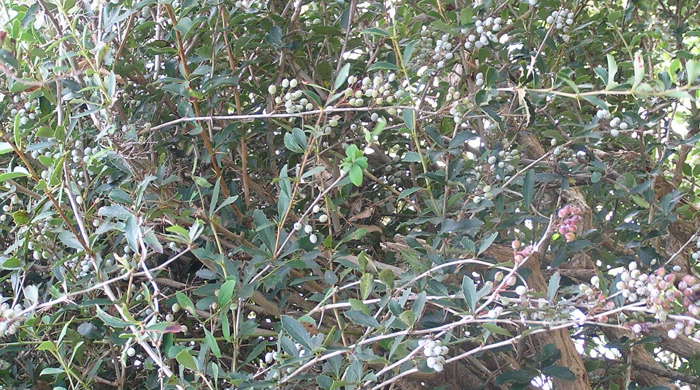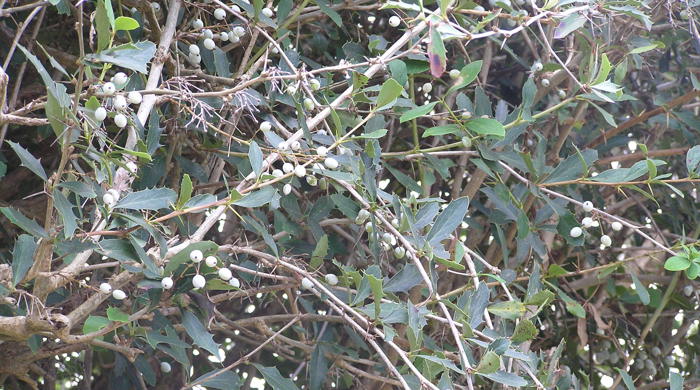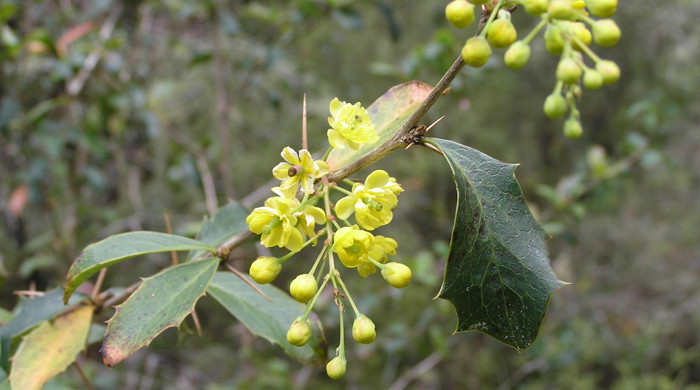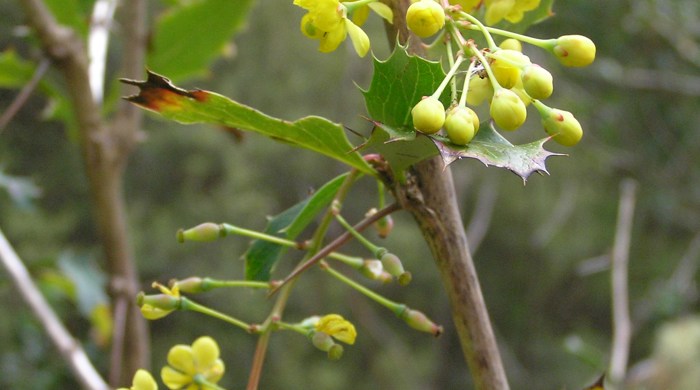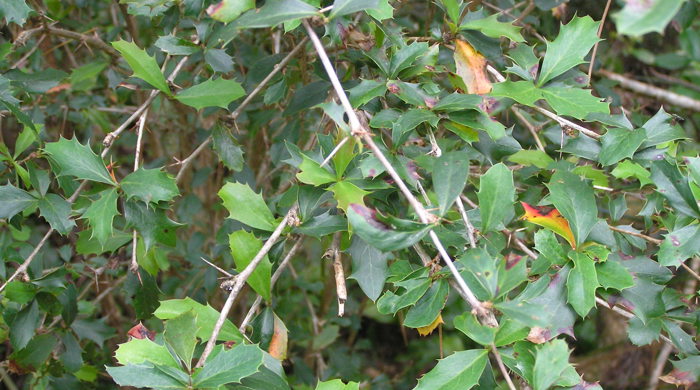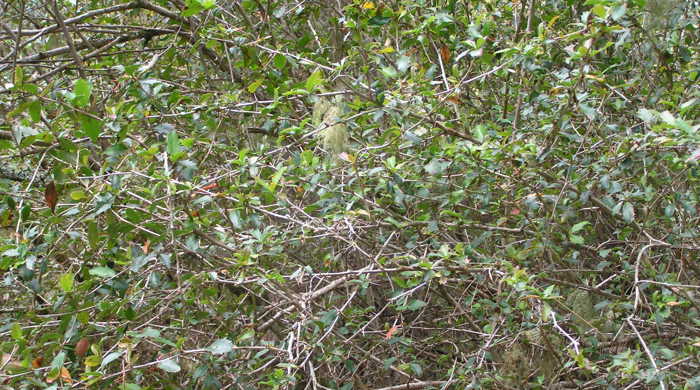Berberis glaucocarpa
Barberry
Family: Berberidaceae
Origin: Himalayas

Regional Pest Management Plan (RPMP) status
- Whole region — Sustained control
- Hauraki Gulf Controlled Area Notice pest
General description
Evergreen or semi-deciduous spiny shrub < 7 m tall. Leaves are leathery, < 75 x 25 mm, and often turn reddish in autumn. Flowers are yellow and are borne in <6cm long clusters in October – November. Berries are oval, red/black, and are borne in March – May.
What you need to know
To help protect our environment:
- You must not breed, distribute, release or sell barberry within the Auckland region.
- You must not plant barberry within the Auckland region, unless you are transferring an existing plant on your land to another location within the boundaries of the same property.
- You must destroy any barberry on land that you occupy if it has been planted in breach of the above rules and you are directed to do so by an authorised person.
Habitats
Disturbed forest and scrubland, tussock land, bare and stony land, cliffs, coastal areas, riparian areas, wasteland.
Dispersal
Seeds dispersed by birds, water, soil movement and possibly possums.
Impact on environment
Replaces pasture species, reducing grazing area and impeding livestock movement. Can displace native species in open habitats.
Control
Site Management
Follow up treated areas 3 times per year. Encourage natural regeneration of native plants or replant treated areas where possible after 2-3 treatments to establish dense ground cover and minimise reinvasion.
Recommended approaches
Physical control
Method: Dig out.
Plant parts requiring disposal: Seeds.
Disposal options: Remove to greenwaste or landfill.
Biocontrol
Biocontrol is currently not available for this species.
Community agrichemical control recommendations
No qualifications: Cut stump and paste freshly cut base of stems with metsulfuron gel.
Basic Growsafe certified: Foliar spray with 5g metsulfuron-methyl per 10L of water.
Safety notes
Plant has thorns.
Caution: When using any herbicide or pesticide please read the label thoroughly to ensure that all instructions and safety requirements are followed.
